Saint-Gobain Bundle
Who Really Controls Saint-Gobain?
Uncover the ownership secrets of Saint-Gobain, a global powerhouse shaping industries since 1665. Understanding Saint-Gobain SWOT Analysis is just the beginning; knowing who steers this industrial giant is key to grasping its future. From royal origins to modern markets, the Saint-Gobain ownership story is a fascinating journey through centuries of business evolution.
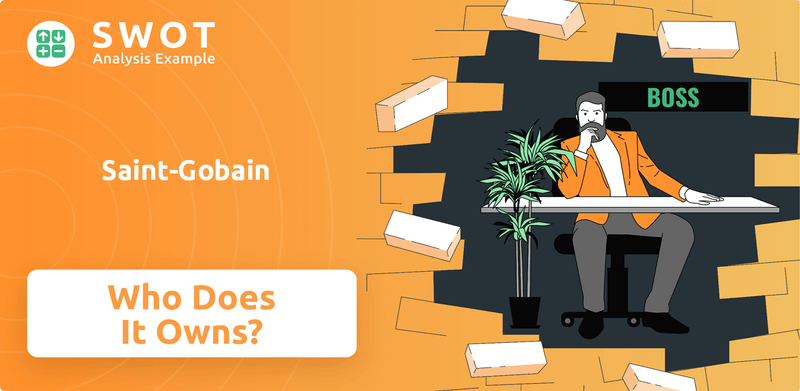
Delving into the specifics of "Who owns Saint-Gobain?" reveals a complex structure, vital for investors, analysts, and anyone interested in the Saint-Gobain company profile. This exploration of Saint-Gobain ownership will illuminate the company’s governance, shareholder influence, and strategic direction, offering insights into its financial performance and market capitalization. Understanding the Saint-Gobain shareholders and their impact is crucial for anyone looking to invest or simply understand this influential player in the global market.
Who Founded Saint-Gobain?
The story of Saint-Gobain's origins is unique. It didn't start with individual entrepreneurs but with a royal initiative. King Louis XIV of France, with the help of his finance minister Jean-Baptiste Colbert, established the Manufacture royale de glaces de miroirs in 1665.
Initially, the French Crown effectively owned the company. The goal was to develop a domestic glass manufacturing industry, challenging Venice's existing monopoly. This meant the early ownership structure was one of state control and patronage, rather than private investment or individual shareholders.
Early funding came from royal grants and later from private investment solicited by the Crown. The company received significant privileges and monopolies, which were its main capital and competitive advantage. Early backers were essentially investors in a state-backed enterprise, with returns tied to the success of the royal venture. There were no typical founder agreements like vesting schedules, as the enterprise's main purpose was national industrial development. The vision of the founding team—King Louis XIV and Colbert—was explicitly reflected in this state-controlled distribution of power, aiming to establish French industrial self-sufficiency and grandeur.
Founded in 1665 by King Louis XIV of France and his finance minister, Jean-Baptiste Colbert.
The initial ownership was held by the French Crown, reflecting state control.
The company was granted significant privileges and monopolies to ensure its success.
Early operations were funded by royal grants and later by private investment.
The vision was to establish French industrial self-sufficiency and grandeur.
Early backers were essentially investors in a state-backed enterprise.
Understanding the initial ownership of Saint-Gobain provides insights into its unique history and development. The company's early structure was rooted in royal patronage and state control, setting it apart from many other businesses. To learn more about the company's focus, explore the Target Market of Saint-Gobain.
- King Louis XIV and Jean-Baptiste Colbert founded the company.
- The French Crown initially held ownership.
- The company received royal grants and monopolies.
- The aim was to break Venice's glass monopoly and boost French industry.
Saint-Gobain SWOT Analysis
- Complete SWOT Breakdown
- Fully Customizable
- Editable in Excel & Word
- Professional Formatting
- Investor-Ready Format
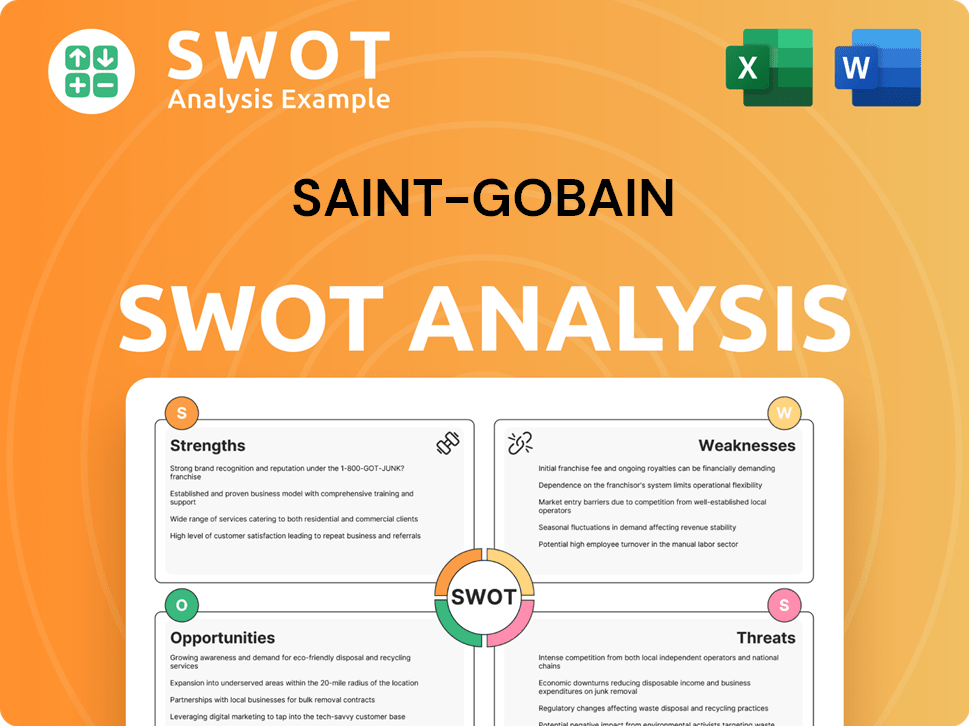
How Has Saint-Gobain’s Ownership Changed Over Time?
The evolution of Saint-Gobain's ownership reflects a significant transformation from its origins. Initially established under royal patronage, the company has evolved into a publicly traded entity. Its shares are listed on Euronext Paris (ISIN: FR0000125007), marking a shift towards a more diversified ownership structure. This transition has been crucial in shaping the company's strategic direction and its approach to market dynamics.
The shift to public ownership has broadened the base of Saint-Gobain's shareholders, with institutional investors now holding a major stake. This change has influenced the company's governance and strategic focus, emphasizing transparency and shareholder value. The move has facilitated Saint-Gobain's global expansion and adaptation to changing market conditions, supported by a diverse group of investors.
| Shareholder | Approximate Stake (as of late 2024/early 2025) | Notes |
|---|---|---|
| BlackRock, Inc. | Around 6.01% of share capital and 5.03% of voting rights (December 2024) | A significant institutional investor. |
| Norges Bank Investment Management | Substantial | A key institutional shareholder. |
| The Vanguard Group | Substantial | A major player in the investment landscape. |
| Amundi Asset Management | Substantial | Another prominent institutional investor. |
As of May 2025, the market capitalization of Saint-Gobain was approximately €27.4 billion, highlighting its strong market position. This financial strength is a result of its strategic evolution and the trust placed in it by its diverse shareholder base. For more insights into the company's financial strategy, consider exploring the Revenue Streams & Business Model of Saint-Gobain.
Saint-Gobain ownership has transitioned from state-backed to public, with institutional investors as key stakeholders.
- BlackRock, Inc. holds a significant percentage of shares.
- Norges Bank Investment Management, The Vanguard Group, and Amundi Asset Management are also major shareholders.
- The company's market capitalization reflects its robust market position.
- This structure supports Saint-Gobain's growth and adaptability.
Saint-Gobain PESTLE Analysis
- Covers All 6 PESTLE Categories
- No Research Needed – Save Hours of Work
- Built by Experts, Trusted by Consultants
- Instant Download, Ready to Use
- 100% Editable, Fully Customizable
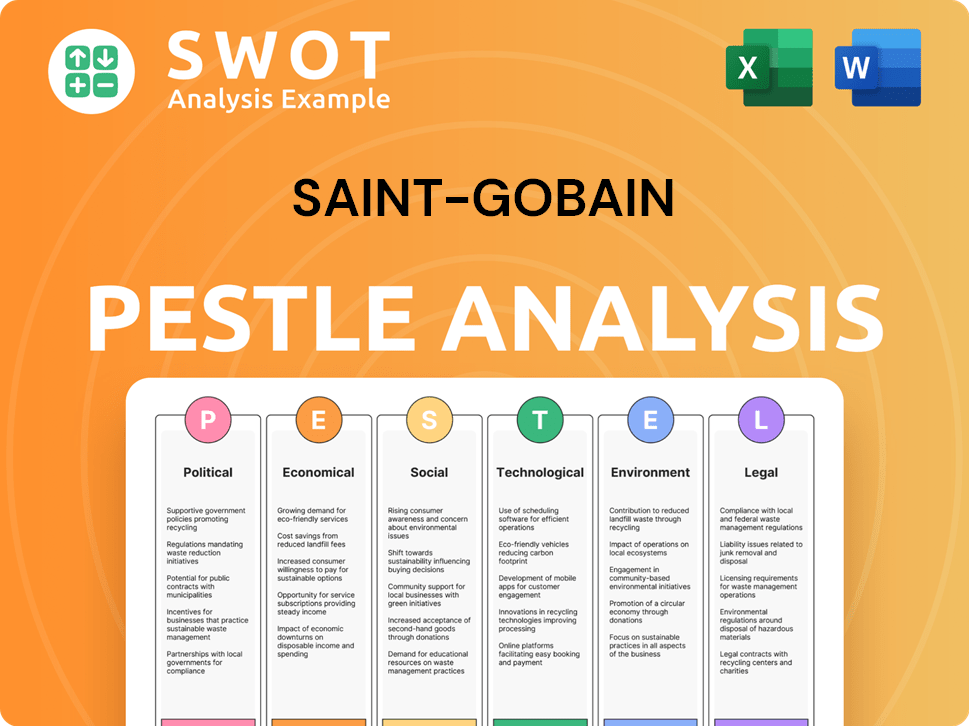
Who Sits on Saint-Gobain’s Board?
As of mid-2024, the Board of Directors of Saint-Gobain reflects a blend of independence and expertise, essential for guiding a publicly traded entity of its size. The board typically includes independent directors, representatives of major shareholders, and executive directors. For example, Pierre-André de Chalendar previously served as Chairman, while Benoit Bazin is the Chief Executive Officer and a director. The composition of the board includes a significant number of independent directors, a common practice among large, publicly listed companies to ensure balanced decision-making and strong corporate governance. This structure supports effective oversight and strategic direction for the company, contributing to its operational success and shareholder value.
The board's structure is designed to ensure robust governance and strategic oversight. The presence of independent directors is a key element in maintaining objectivity and accountability. The board's composition and governance practices are regularly reviewed and affirmed at the annual general meetings. The board's commitment to shareholder democracy is evident through its adherence to these practices, which are crucial for maintaining investor confidence and ensuring the long-term health of the company.
| Board Member | Position | Notes |
|---|---|---|
| Benoit Bazin | Chief Executive Officer | Executive Director |
| Pierre-André de Chalendar | Former Chairman | Previous Chairman |
| Independent Directors | Various | Ensuring balanced decision-making |
Saint-Gobain generally operates under a one-share-one-vote principle for its ordinary shares, ensuring that voting power is proportional to shareholding. The company's Articles of Association may grant double voting rights for fully paid-up shares held in registered form for at least two years by the same shareholder, which encourages long-term shareholding. The company's commitment to robust shareholder democracy is reflected in the regular reviews and affirmations at the annual general meetings. For more insights, explore the Growth Strategy of Saint-Gobain.
Saint-Gobain's board includes a mix of independent and executive directors, ensuring balanced decision-making. The company promotes shareholder democracy through its voting structure and governance practices.
- The board's structure supports effective oversight and strategic direction.
- One-share-one-vote principle is generally followed.
- Double voting rights may be granted for long-term shareholders.
- Regular reviews and affirmations at annual general meetings.
Saint-Gobain Business Model Canvas
- Complete 9-Block Business Model Canvas
- Effortlessly Communicate Your Business Strategy
- Investor-Ready BMC Format
- 100% Editable and Customizable
- Clear and Structured Layout
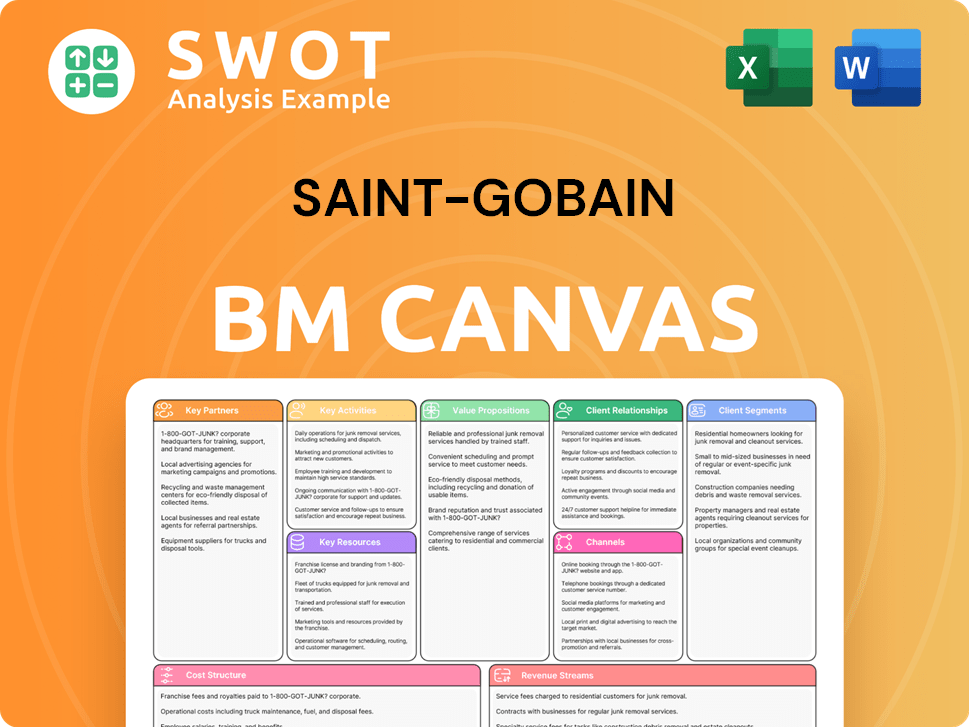
What Recent Changes Have Shaped Saint-Gobain’s Ownership Landscape?
In the past few years (2022-2025), the ownership of Saint-Gobain has seen ongoing evolution. This aligns with the broader industry trend of increased institutional ownership. The company has been involved in strategic moves, including acquisitions like Building Products of Canada Corp. in early 2024. This move supports its growth in sustainable construction, potentially attracting new investors or solidifying existing holdings.
A key trend is the growing focus from institutional investors on environmental, social, and governance (ESG) factors. Saint-Gobain, with its emphasis on sustainable solutions and a commitment to carbon neutrality by 2050, is well-positioned. This focus influences long-term ownership, as funds dedicated to responsible investing allocate capital to companies with strong ESG performance. The company's share buyback programs, such as the €440 million program announced in early 2024, can incrementally increase earnings per share and influence the ownership structure by reducing the number of outstanding shares.
| Metric | Value | Year |
|---|---|---|
| Market Capitalization (approx.) | €40 Billion | 2024 |
| Revenue (2023) | €47.9 Billion | 2023 |
| Net Income (2023) | €3.0 Billion | 2023 |
These trends suggest a stable, institutionally-backed ownership structure committed to long-term value creation and sustainable growth. Understanding the Marketing Strategy of Saint-Gobain can also provide insights into the company's strategic direction and its ability to attract and retain investors.
Saint-Gobain is a publicly traded company, with a significant portion of shares held by institutional investors. The ownership structure is largely influenced by market dynamics and investor preferences, with a focus on long-term value creation and sustainable growth.
Major shareholders typically include large institutional investors and investment funds. The exact composition of the shareholder base can fluctuate based on market activities and investment decisions. The company's annual reports provide detailed information on major shareholders.
ESG (Environmental, Social, and Governance) factors play a crucial role in attracting and retaining institutional investors. Saint-Gobain's commitment to sustainability and carbon neutrality by 2050 positions it favorably to attract investors prioritizing ESG criteria.
Share buyback programs, like the €440 million program announced in early 2024, can impact the ownership structure by reducing the number of outstanding shares. This can also incrementally increase earnings per share, potentially influencing investor decisions.
Saint-Gobain Porter's Five Forces Analysis
- Covers All 5 Competitive Forces in Detail
- Structured for Consultants, Students, and Founders
- 100% Editable in Microsoft Word & Excel
- Instant Digital Download – Use Immediately
- Compatible with Mac & PC – Fully Unlocked
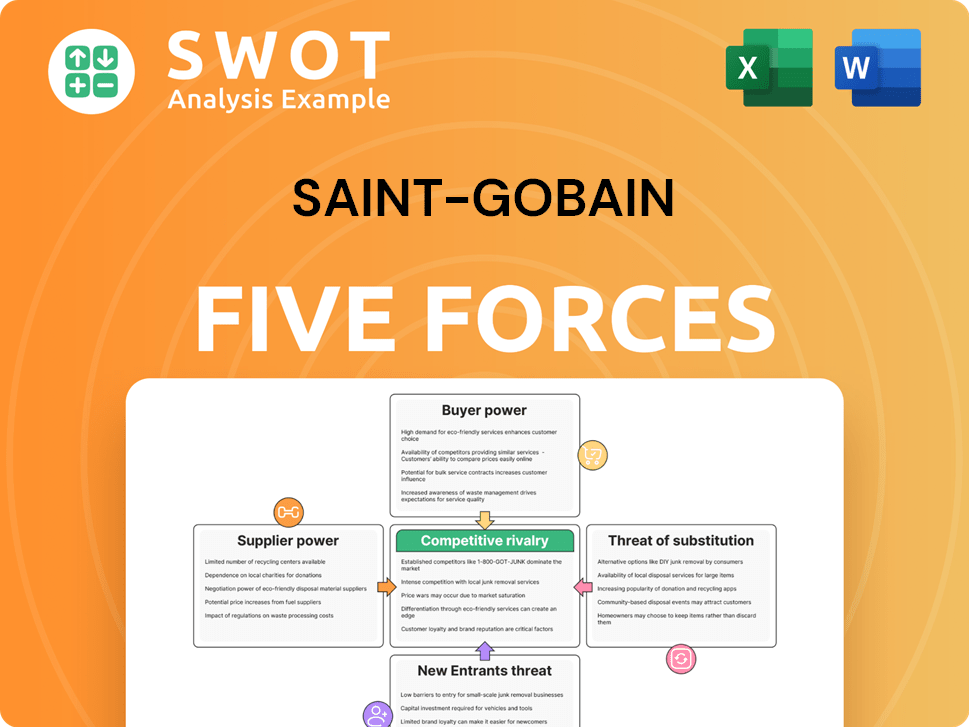
Related Blogs
- What are Mission Vision & Core Values of Saint-Gobain Company?
- What is Competitive Landscape of Saint-Gobain Company?
- What is Growth Strategy and Future Prospects of Saint-Gobain Company?
- How Does Saint-Gobain Company Work?
- What is Sales and Marketing Strategy of Saint-Gobain Company?
- What is Brief History of Saint-Gobain Company?
- What is Customer Demographics and Target Market of Saint-Gobain Company?
Disclaimer
All information, articles, and product details provided on this website are for general informational and educational purposes only. We do not claim any ownership over, nor do we intend to infringe upon, any trademarks, copyrights, logos, brand names, or other intellectual property mentioned or depicted on this site. Such intellectual property remains the property of its respective owners, and any references here are made solely for identification or informational purposes, without implying any affiliation, endorsement, or partnership.
We make no representations or warranties, express or implied, regarding the accuracy, completeness, or suitability of any content or products presented. Nothing on this website should be construed as legal, tax, investment, financial, medical, or other professional advice. In addition, no part of this site—including articles or product references—constitutes a solicitation, recommendation, endorsement, advertisement, or offer to buy or sell any securities, franchises, or other financial instruments, particularly in jurisdictions where such activity would be unlawful.
All content is of a general nature and may not address the specific circumstances of any individual or entity. It is not a substitute for professional advice or services. Any actions you take based on the information provided here are strictly at your own risk. You accept full responsibility for any decisions or outcomes arising from your use of this website and agree to release us from any liability in connection with your use of, or reliance upon, the content or products found herein.